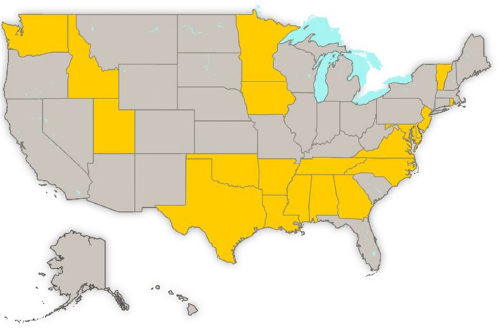E
Map of U.S. States with CPR Training as a High School Graduation Requirement

FIGURE E-1 U.S. States that require or will require cardiopulmonary resuscitation (CPR) training as a high school graduation requirement.
SOURCE: Reprinted with permission from the American Heart Association.
| State | Year of Enactment |
| Alabama | 1984 |
| Arkansas | 2014-15 |
| Delaware | 2014-15 |
| Georgia | 2013-14 |
| Idaho | 2015-16 |
| Iowa | 2008 |
| Louisiana | 2014-15 |
| Maryland | 2014 |
| Minnesota | 2014-2015 |
| Mississippi | 2014 |
| New Jersey | 2014 |
| North Carolina | 2014-15 |
| Oklahoma | 2015-16 |
| Oregon | 2015-16 |
| Rhode Island | 2013 |
| Tennessee | 2012 |
| Texas | 2014-15 |
| Utah | 2014-15 |
| Vermont | 2012 |
| Virginia | 2016-17 |
| Washington | 2014-15 |
| West Virginia | 2015-16 |
SOURCE: The American Heart Association, 2015. http://www.heart.org/HEARTTORG/CPRAndECC/CommunityCPRandFirstAid/CPRinSchools/States-CPR-Regulations-for-Schools_UCM_470097_SubHomePage.jsp (accessed June 19, 2015).


